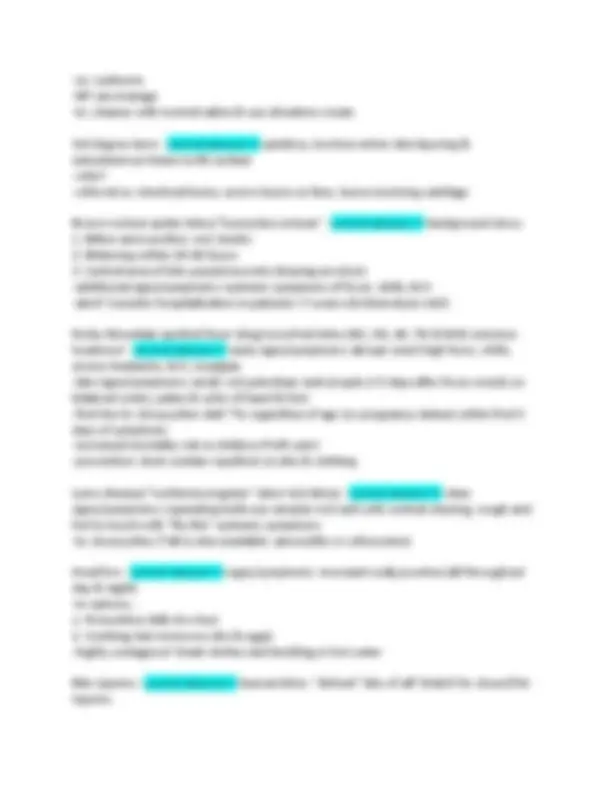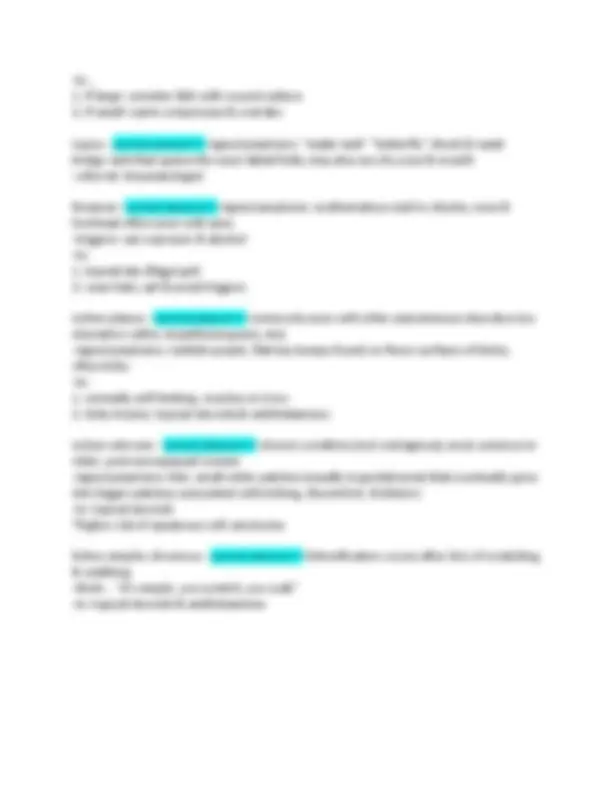








Study with the several resources on Docsity

Earn points by helping other students or get them with a premium plan


Prepare for your exams
Study with the several resources on Docsity

Earn points to download
Earn points by helping other students or get them with a premium plan
Community
Ask the community for help and clear up your study doubts
Discover the best universities in your country according to Docsity users
Free resources
Download our free guides on studying techniques, anxiety management strategies, and thesis advice from Docsity tutors
Rubeola/"measles" - correct answer>>-childhood exanthem -early signs/symptoms: fever & 3 C's (cough, congestion, conjunctivitis) -key findings: koplik's spots (small white papules on buccal mucosa) -late signs/symptoms (3-5 days): flat, red generalized rash -transmission: airborne precautions...very contagious! -tx: symptomatic care (hydration and antipyretics) Rubella/"german" or "3-day" measles - correct answer>>-(mild)signs/symptoms: cervical lymphadenopathy & pink rash (starting on face and extending to rest of body) -transmission: droplet
Typology: Exams
1 / 10

This page cannot be seen from the preview
Don't miss anything!







Rubeola/"measles" - correct answer>>-childhood exanthem
—if only a few lesions: cryotherapy —if many lesions: fluorouracil 5% (efudex) over several weeks
Keloid scars - correct answer>>-scar tissue spreads beyond the border of the initial injury
Keratosis Pilaris ("chicken skin" "chicken bumps") - correct answer>>-signs/symptoms: overproduction of keratin causes blockage of hair follicles, producing rough patches & small red bumps on skin (arms, thighs, cheeks)